Giving calves a good start in life pays off in the long run.
Any sickness in the first few weeks can have negative consequences.
Farmers often ask what we do as regards vaccinations with calves on Tullamore Farm.
Vaccinations play a critical role but it’s probably what we do before calving that has the biggest effect on calf health on the farm.
Pre calving
Calf health really starts during the winter months and some might even argue it starts when cows are bred in May of the previous year.
Difficult calvings will increase mortality levels and will also increase the amount of time taken to look after these calves in the first few days of birth.
Bulls are matched to cows as best we can to try and make sure that we don’t encounter any major calving difficulty.
In general we air on the side of caution in relation to calving difficulty and don’t use bulls over 9% on calving difficulty.
Cows are body condition scored and any cows under fleshed are fed accordingly.
Any cows that are too fit are restricted in feed and fed poorer quality silage.
The ideal body condition score for cows calving is 2.5-3 on a scale of 1 being very thin and 5 being very fat. Cows are vaccinated for scour about four to six weeks before calving.
Soya bean meal is also fed to cows seven to 10 days before calving to increase the protein content of the diet and ensure cows calve down with adequate colostrum.
Sheds are cleaned out on a regular basis and ample straw is used in calving pens.
Calving
Most cows calve down in a large communal pen and are then moved after calving to individual pens.
Calves’ navels are treated with chlorohexidine and if a cow has been assisted to calve, the cow is hand milked and the calf is stomach tubed with 3l of colostrum straight after calving.
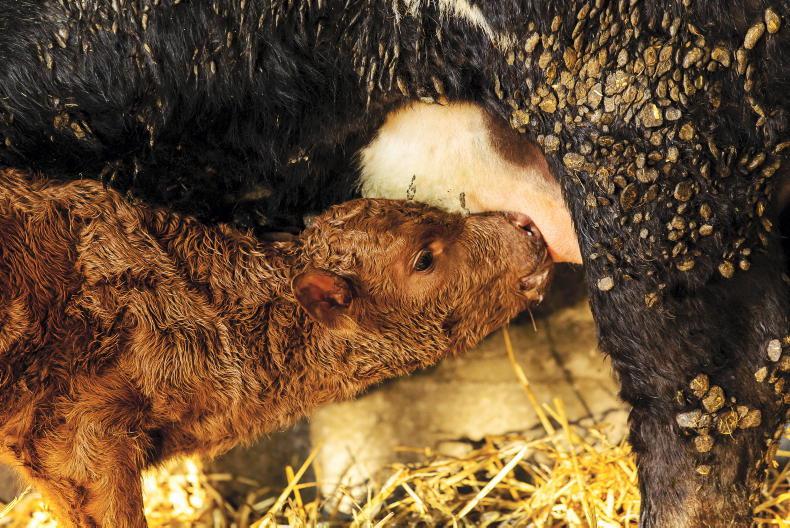
A newborn calf suckles. \ Philip Doyle
If a cow calves by herself, the calf is monitored to make sure it is up sucking.
Cows are left in individual pens for as long as possible, generally 2-3 days before being moved back to a straw bed.
If weather conditions are poor, cows will move onto slats for a few weeks with calves having access to a creep area bedded with straw.
Vaccinations
Calves are dehorned at 10 days of age and they also get their first shot of pneumonia vaccine at this stage. Two weeks after that, they get their first shot of clostridial vaccine.
A further two weeks after this, they get their second shot of pneumonia vaccine and a shot of IBR vaccine. Two weeks after this they get their second shot of clostridial vaccine.
A group of calves are generally batched up together around these dates in order to minimise the amount of labour involved.
Calves will then get their first dose for worms as required based on test results of a faecal sample. This generally takes place in June/July.
Giving calves a good start in life pays off in the long run.
Any sickness in the first few weeks can have negative consequences.
Farmers often ask what we do as regards vaccinations with calves on Tullamore Farm.
Vaccinations play a critical role but it’s probably what we do before calving that has the biggest effect on calf health on the farm.
Pre calving
Calf health really starts during the winter months and some might even argue it starts when cows are bred in May of the previous year.
Difficult calvings will increase mortality levels and will also increase the amount of time taken to look after these calves in the first few days of birth.
Bulls are matched to cows as best we can to try and make sure that we don’t encounter any major calving difficulty.
In general we air on the side of caution in relation to calving difficulty and don’t use bulls over 9% on calving difficulty.
Cows are body condition scored and any cows under fleshed are fed accordingly.
Any cows that are too fit are restricted in feed and fed poorer quality silage.
The ideal body condition score for cows calving is 2.5-3 on a scale of 1 being very thin and 5 being very fat. Cows are vaccinated for scour about four to six weeks before calving.
Soya bean meal is also fed to cows seven to 10 days before calving to increase the protein content of the diet and ensure cows calve down with adequate colostrum.
Sheds are cleaned out on a regular basis and ample straw is used in calving pens.
Calving
Most cows calve down in a large communal pen and are then moved after calving to individual pens.
Calves’ navels are treated with chlorohexidine and if a cow has been assisted to calve, the cow is hand milked and the calf is stomach tubed with 3l of colostrum straight after calving.

A newborn calf suckles. \ Philip Doyle
If a cow calves by herself, the calf is monitored to make sure it is up sucking.
Cows are left in individual pens for as long as possible, generally 2-3 days before being moved back to a straw bed.
If weather conditions are poor, cows will move onto slats for a few weeks with calves having access to a creep area bedded with straw.
Vaccinations
Calves are dehorned at 10 days of age and they also get their first shot of pneumonia vaccine at this stage. Two weeks after that, they get their first shot of clostridial vaccine.
A further two weeks after this, they get their second shot of pneumonia vaccine and a shot of IBR vaccine. Two weeks after this they get their second shot of clostridial vaccine.
A group of calves are generally batched up together around these dates in order to minimise the amount of labour involved.
Calves will then get their first dose for worms as required based on test results of a faecal sample. This generally takes place in June/July.






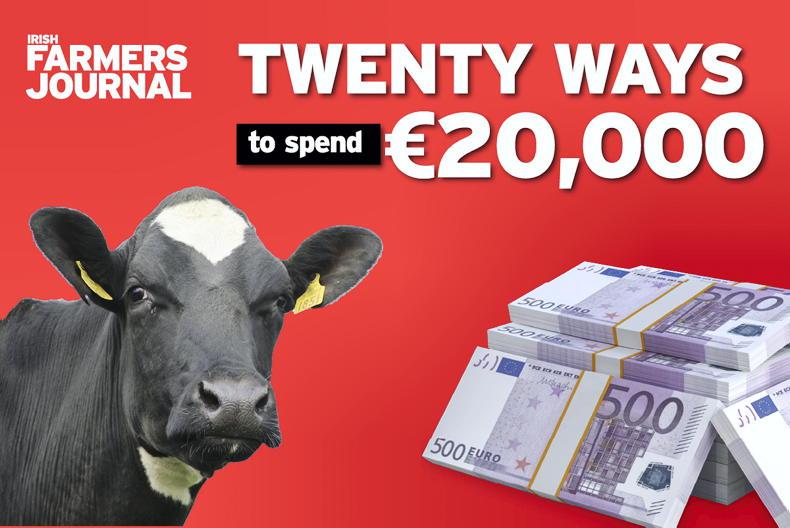

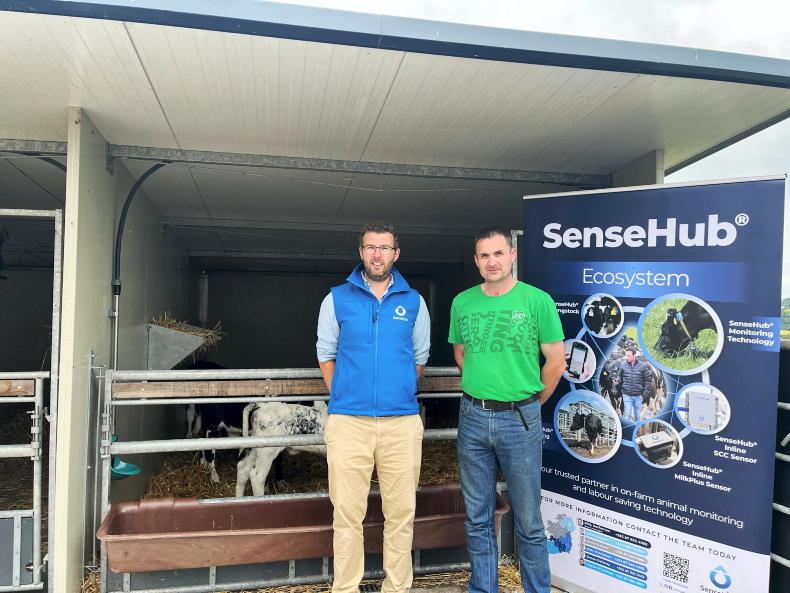
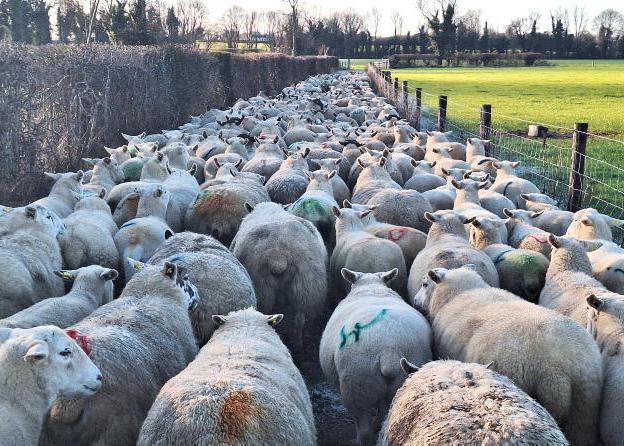
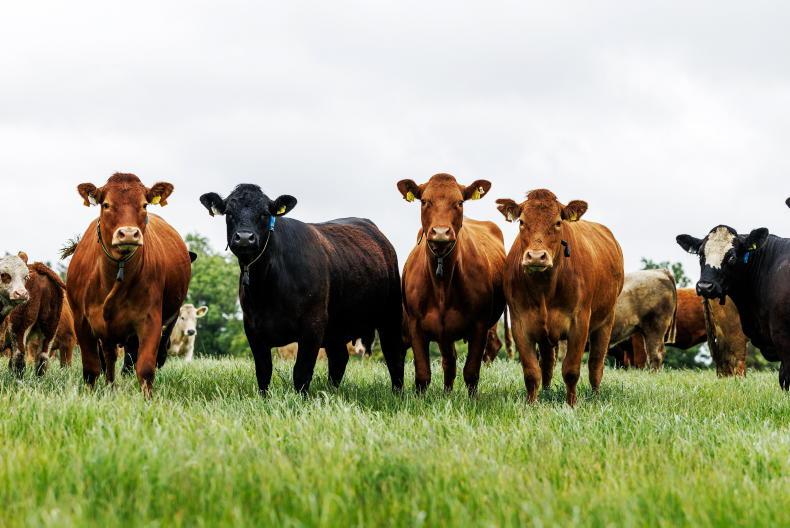
SHARING OPTIONS